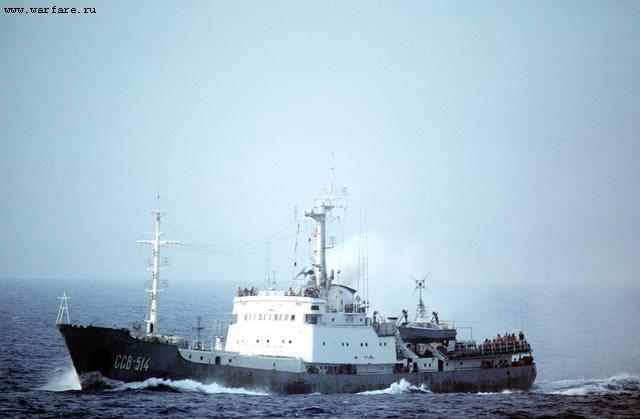The depths of the Red Sea hold more mysteries than one might imagine. Among them lies the intriguing story of the “Russian Wreck,” a vessel with a mysterious past, buried beneath the waves. This shipwreck, also known as the Khanka, has captured the imagination of divers and maritime history enthusiasts. It’s a story that unfolds like a Cold War thriller, making it an ideal destination for adventurous scuba divers eager to explore both history and the deep blue sea.
A Spy Ship’s Hidden Past
Little is known about the Khanka, a Russian spy ship that ventured far from home. The ship was a modified 861-class survey/buoy tender, bearing the distinctive “SSV” designation, which identified it as a communications vessel. These ships were known for their roles in electronic signal intelligence gathering and surveillance during the height of the Cold War.
In those tense years, Russia relied on these unassuming commercial vessels to conduct covert operations, often retrofitting them to carry SIGINT and ELINT equipment, allowing them to discreetly collect intelligence from international waters. The Khanka, however, remains an enigma, with no official records confirming its existence within the MOMA class.
Cold War Russian ELINT History
The backdrop to this intriguing shipwreck is the early Cold War era, when Russia lacked an extensive network of overseas listening posts. To overcome this limitation, they employed commercial ships, particularly fishing trawlers, to conduct covert surveillance of foreign governments. These versatile vessels were affordable to operate and maintain and could be easily modified to carry hidden surveillance equipment.
As Russia evolved its “spy ships,” it began constructing purpose-built ELINT platforms, marking a significant development in the world of espionage and maritime history.
The Khanka’s Presence in the Red Sea
The Khanka’s final resting place is 24 meters below the surface in the western bay of Zabargad Island. Its presence in the southern Red Sea may seem perplexing at first, but it holds significant geopolitical relevance. In 1971, the Russians established a surveillance facility on Socotra Island, which provided access to strategic locations at the mouth of the Gulf of Aden and the Indian Ocean. This placement allowed them to monitor marine traffic, both commercial and military, entering and leaving the Red Sea, giving them a strategic upper hand during the Cold War.
Diving into History
The Khanka’s wreck is a fascinating destination for scuba divers. It lies in the clear waters of the Red Sea, and the mast just breaks the surface during low tide, providing an excellent reference point for divers. The ship seems to have collided head-on with the reef, causing the bow and forward hold to separate and rest on its port side. The rest of the ship remains upright, facing the reef.
Divers can explore the pilothouse and engine room, and for the adventurous, the ship’s holds may be accessible, offering a glimpse into the potential “spy” equipment that may have been onboard. The wreck still boasts many deck fittings, hatches, and some handrails, providing a vivid snapshot of the ship’s past.
However, divers should be prepared for the underwater currents that can affect visibility at the site. The excitement of discovering this historical relic is well worth the potential challenges.
The Red Sea’s “Russian Wreck” is not just a diving destination; it’s a portal into the covert world of Cold War espionage. As you explore its submerged remains, you can’t help but wonder about the secrets it carried and the stories it could tell if only its rusted hull could speak. The Khanka is a testament to the hidden history that still lies beneath the waves, waiting for intrepid explorers to uncover its mysteries.







